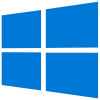KB5027215: The update fixes a known issue affecting 32-bit applications
Highlights
This update addresses security issues for your Windows operating system.
Improvements
Note To view the list of addressed issues, click or tap the OS name to expand the collapsible section.
Windows 10, version 22H2
This security update includes quality improvements. Key changes include:
- This build includes all the improvements from the supported Windows 10, version 21H2 editions.
- No additional issues are documented for this release.
Windows 10, version 21H2
Important: Use EKB KB5003791 to update to Windows 10, version 21H2.
This security update includes quality improvements that were a part of update KB5026435 (released May 23, 2023). When you install this KB:
- This update addresses a known issue that affects 32-bit apps that are large address aware and use the CopyFile API. You might have issues when you save, copy, or attach files. If you use some commercial or enterprise security software that uses extended file attributes, this issue will likely affect you. For Microsoft Office apps, this issue only affects the 32-bit versions. You might receive the error, "Document not saved."
- This update addresses an issue that affects the Windows Kernel. This issue is related to CVE-2023-32019. To learn more, see KB5028407.
If you installed earlier updates, only the new updates contained in this package will be downloaded and installed on your device.
For more information about security vulnerabilities, please refer to the new Security Update Guide website and the June 2023 Security Updates.
Windows 10 servicing stack update - 19044.3025 and 19045.3025
This update makes quality improvements to the servicing stack, which is the component that installs Windows updates. Servicing stack updates (SSU) ensure that you have a robust and reliable servicing stack so that your devices can receive and install Microsoft updates.
Known issues in this update
- Devices with Windows installations created from custom offline media or custom ISO image might have Microsoft Edge Legacy removed by this update, but not automatically replaced by the new Microsoft Edge. This issue is only encountered when custom offline media or ISO images are created by slipstreaming this update into the image without having first installed the standalone servicing stack update (SSU) released March 29, 2021 or later.
Note Devices that connect directly to Windows Update to receive updates are not affected. This includes devices using Windows Update for Business. Any device connecting to Windows Update should always receive the latest versions of the SSU and latest cumulative update (LCU) without any extra steps.


